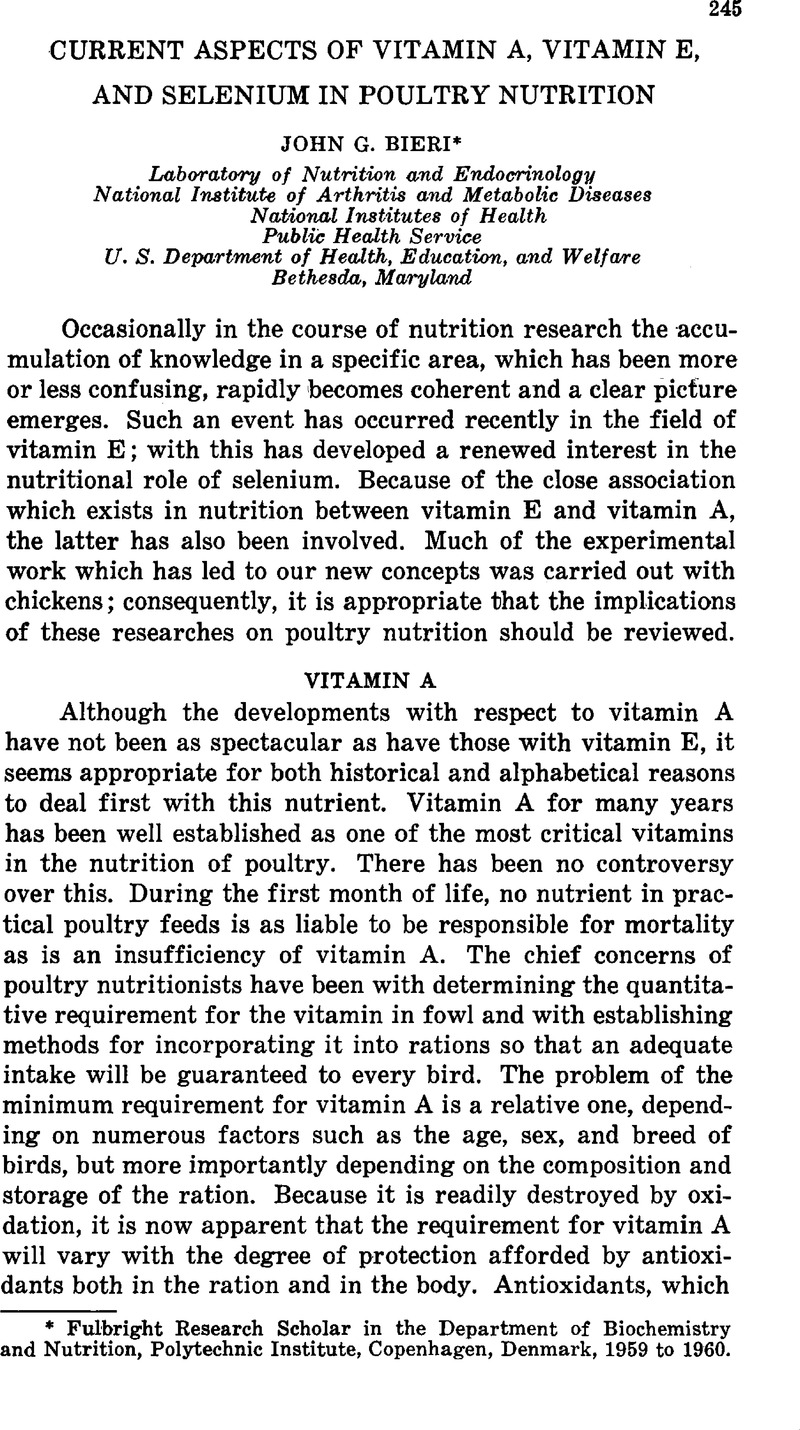Crossref Citations
This article has been cited by the following publications. This list is generated based on data provided by Crossref.
Søndergaard, E.
Bieri, J. G.
and
Dam, H.
1960.
Further observations on the effects of selenium and antioxidants on exudative diathesis in chicks.
Experientia,
Vol. 16,
Issue. 12,
p.
554.
Corwin, Laurence M.
1962.
Studies on peroxidation in vitamin E-deficient rat liver homogenates.
Archives of Biochemistry and Biophysics,
Vol. 97,
Issue. 1,
p.
51.
Bunyan, J.
Diplock, A. T.
Edwin, E. E.
and
Green, J.
1962.
Exudative diathesis and lipid peroxidation in the chick.
British Journal of Nutrition,
Vol. 16,
Issue. 1,
p.
519.
Machlin, L.J.
and
Gordon, R.S.
1962.
Etiology of Exudative Diathesis, Encephalomalacia, and Muscular Degeneration in the Chicken.
Poultry Science,
Vol. 41,
Issue. 2,
p.
473.
Hutcheson, Lilian M.
Hill, D.C.
and
Jenkins, K.J.
1963.
Influence of Dietary Fat on the Efficacy of Agents Protecting Against Muscular Dystrophy in the Chick.
Poultry Science,
Vol. 42,
Issue. 4,
p.
846.
ROSENFELD, IRENE
and
BEATH, ORVILLE A.
1964.
Selenium.
p.
233.
Bieri, John G.
1964.
Antioxidant effects in biochemistry and physiology.
Progress in the Chemistry of Fats and other Lipids,
Vol. 7,
Issue. ,
p.
247.
Fouad, Ahmed Mohamed
Ruan, Dong
Wang, Shuang
Chen, Wei
Xia, Weiguang
and
Zheng, Chuntian
2018.
Nutritional requirements of meat-type and egg-type ducks: what do we know?.
Journal of Animal Science and Biotechnology,
Vol. 9,
Issue. 1,





